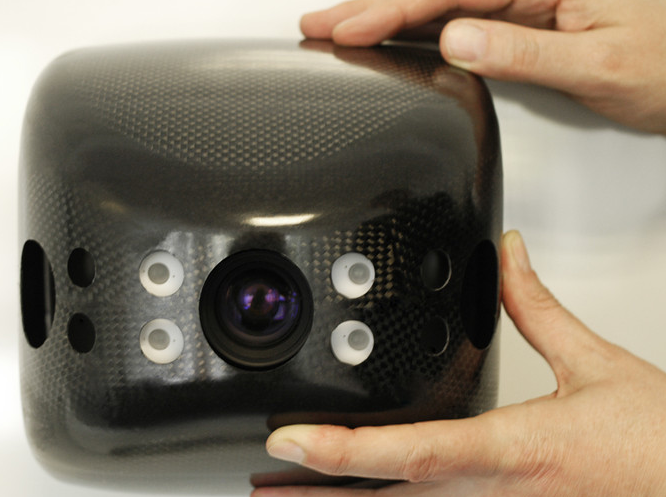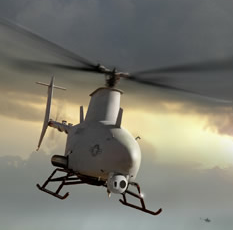Swarms of tiny intelligent drones with cameras — what could go wrong?
May 10, 2012

Little brother is watching you --- from the sky (credit: Fraunhofer Institute for Microelectronic Circuits and Systems)
Are you ready for Eye-Bots — flying smarms of intelligent drones that zoom in and track everything going on?
Yo boy, this one’s gonna make them spyder bots in Minority Report and Big-Brother TV sets in 1984 look positively user-friendly.
A flock of flying robots rises slowly into the air with a loud buzzing noise. They perform an intricate dance in the sky above the seething hordes of soccer fans. Only the swarm of flying drones can maintain an overview of the escalating situation….
This ultimate aerial surveillance scheme was dreamed up by the Fraunhofer Institute for Microelectronic Circuits and Systems in Germany.
These are unmanned aerial vehicles (UAVs) designed as mini-helicopters with a wingspan of around two meters, and intended for police, crisis managers — an ultimately, the dreaded TSA, one imagines.
In operation over the playing field, their cameras and sensors capture urgently needed images and data, and transmit them to the control center, all autonomously – and without ever colliding with each other, or with any other obstacles. The rabid soccer fans suddenly erupt in a huge melee, and riot police storm the field, vectored from the remote command center….
The anti-collision technology trick: a CMOS sensor that can measure 3D distances very efficiently, explains Werner Brockherde, head of the Fraunhofer development department. Every pixel on the sensor is assigned a gray value and 3D distance value, “which enables the drones to accurately determine their position in relation to other objects around them” — and the distance to the subjects below.
He claims this allows for higher res than radar, and can image objects as small as 20 by 15 centimeters at ranges of up to 7.5 meters, with images sent at 12 images per second. They also use nanosecond pulses with timed electronic shutters to deal with sensor washout.
Other uses they suggest: monitoring nuclear power plants for contamination (Fukushima could use some of them right now), maps of difficult-to-access areas (think: Africa, remote areas of China), urban planners (roof inspections for solar installations, 3D models of streets), monitoring construction sites and remote properties (that getaway cottage in Montana?) — avoiding the need for expensive aerial photography or satellite imaging.

MQ-8 unmanned helicopter (credit: Northrop Grumman)
Hmm, I wonder if they plan to use some of these in Chicago next week for the NATO Summit? How about for border patrols? What about the obvious military uses? And will these mini-helicopters be in communication with those thousands of drones flying around the U.S.?
This news from South Korea of an unmanned spy drone that killed two people when it crashed into their control vehicle, and the unmanned Navy helicopter hovering over this guy’s back yard don’t bode well either.
And if you thought people were queasy about seeing themselves in Google Street View, what about when these Eye-Bots go into operation (maybe with silent engines?) and hackers upload their images onto Facebook and YouTube? Hey, maybe it’s time for sousveillance?
But when they start adding tasers for crowd control — and RFID sensors for identity checking — to these things, all remotely controlled from a secret government bunker in West Virginia authorized by CISPA, I think we’re really gonna have a problem….
Investigate further: Fraunhofer CMOS Imaging Workshop in Duisburg, June 12 and 13.
